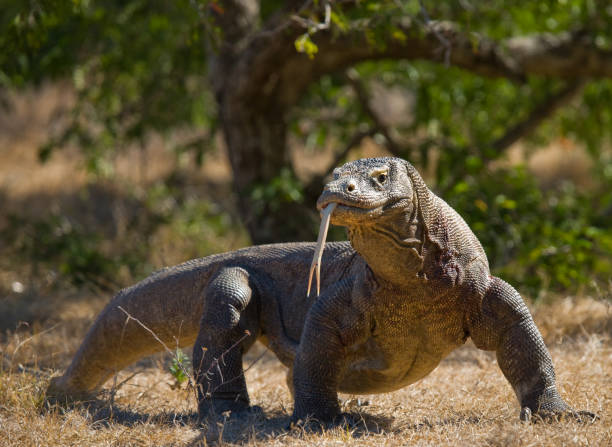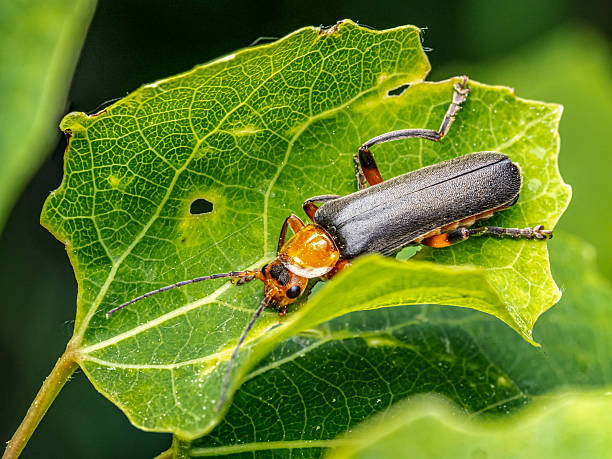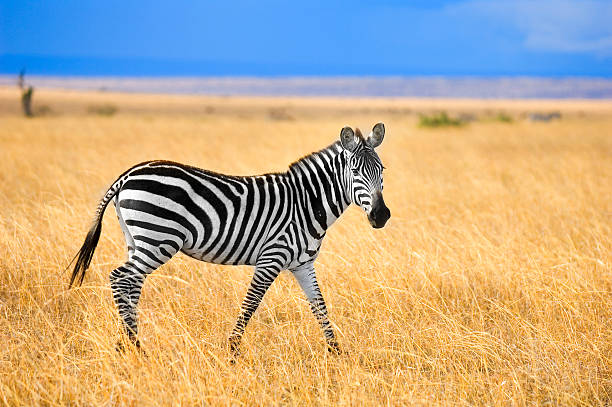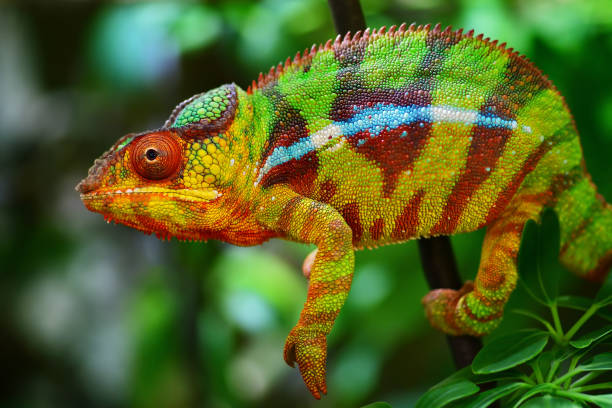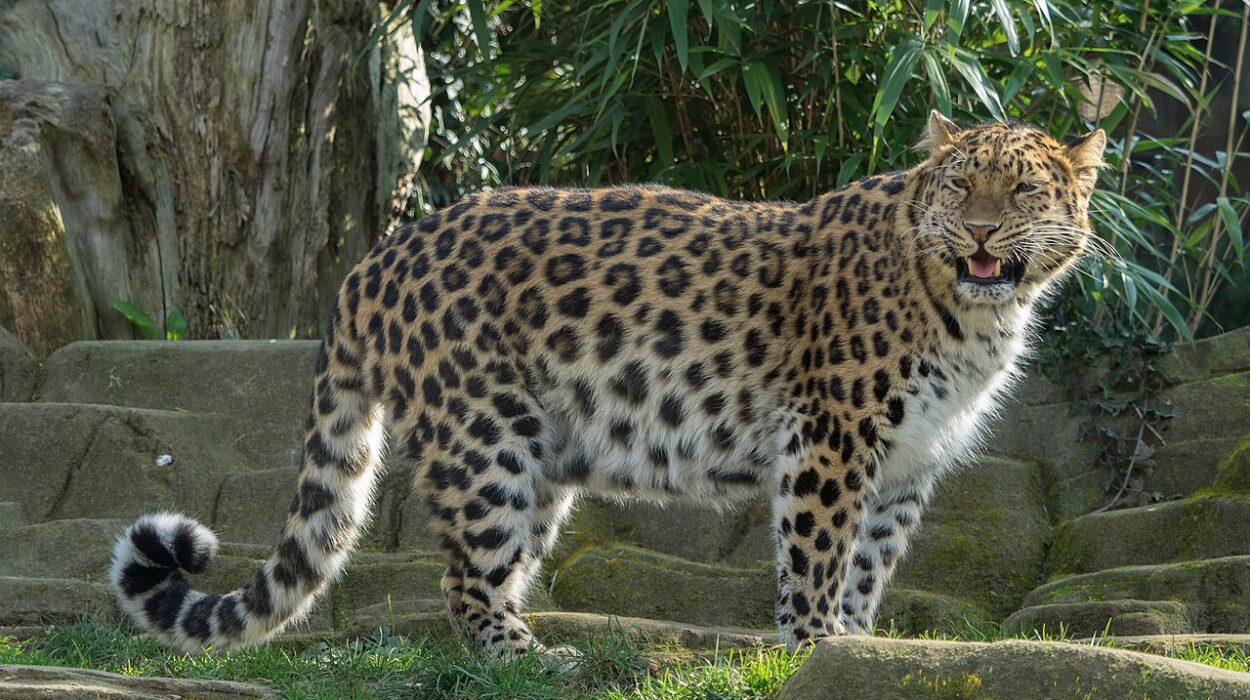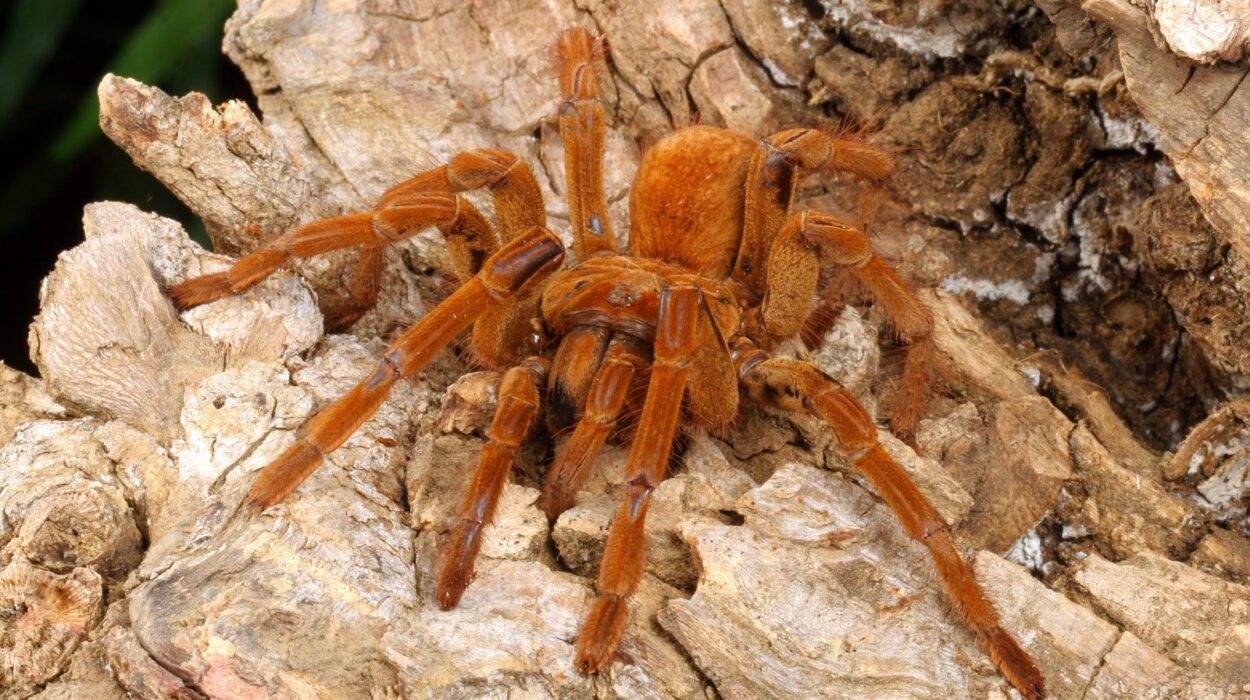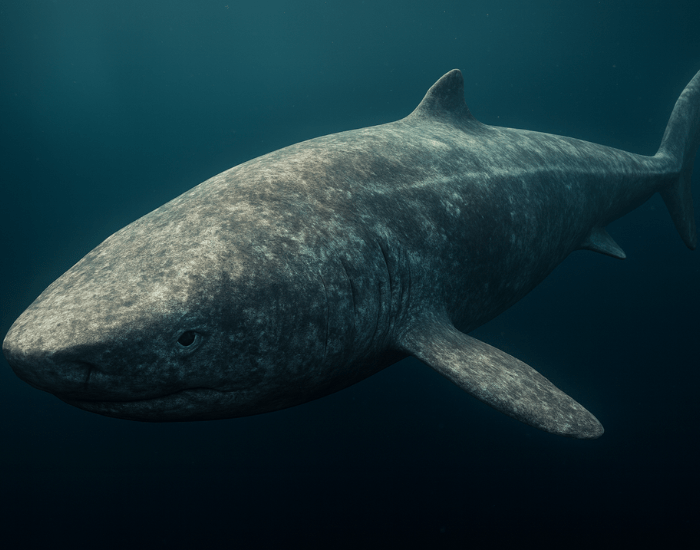Lizards are nature’s living experiments—creatures that seem to have leapt out of a myth or a dream. From shimmering scales that change color to the ability to glide, regrow limbs, and even run across water, lizards embody the creativity of evolution itself. Their world is filled with mystery, adaptability, and survival.
Across deserts, jungles, mountains, and islands, lizards have evolved extraordinary traits that allow them to thrive in environments that would defeat most animals. They are stealthy hunters, expert climbers, and masters of disguise. Some can communicate with color changes; others can live without water for months or even “fly” between trees.
This article explores fifteen of the coolest lizards on Earth—each one a masterpiece of evolution, a symbol of adaptability, and a reminder that the natural world still has stories more wondrous than fiction.
1. The Komodo Dragon – The Giant Ruler of the Reptile World
The Komodo dragon is the largest living lizard on Earth and one of nature’s most formidable predators. Found on a few Indonesian islands, including Komodo and Rinca, this reptile can grow over 10 feet long and weigh more than 150 pounds.
What makes the Komodo dragon truly remarkable is its combination of power, strategy, and biology. It has venom glands that release toxins to lower its prey’s blood pressure and induce shock, a discovery that shattered the old myth of “bacteria-filled saliva.” Once it bites, the Komodo patiently follows its victim until it collapses—an example of cold, reptilian precision.
Despite its intimidating nature, the Komodo is also a creature of intelligence. Studies show they use cooperative hunting strategies and have a complex sense of territory and dominance. Watching one move across volcanic terrain feels like glimpsing into the ancient world—a living echo of the dinosaurs.
2. The Green Basilisk – The Jesus Christ Lizard
If miracles had a mascot, it might be the green basilisk. Found in the tropical rainforests of Central America, this brilliant emerald lizard has earned the nickname “the Jesus Christ Lizard” for its astonishing ability to run on water.
When threatened, the basilisk sprints across ponds and rivers using specialized fringes on its toes. These fringes trap air, allowing the lizard to dash several meters before sinking. Scientists call this “surface locomotion,” but it looks more like magic in motion.
Its abilities don’t stop there. Basilisks are also skilled climbers and swimmers, able to dive underwater for up to 30 minutes to escape predators. Their speed, agility, and vibrant coloration make them one of the most awe-inspiring creatures in the reptile world—a living symbol of faith meeting physics.
3. The Chameleon – The Master of Color and Camouflage
Few animals capture the imagination like the chameleon. With eyes that move independently, tongues that strike faster than a blink, and skin that shifts color in seconds, chameleons are the magicians of the reptile world.
Contrary to popular myth, chameleons don’t just change color to blend in with their surroundings. Their color changes reflect emotion, temperature, and communication. A calm chameleon may glow soft green, while a stressed one might flash deep reds or yellows.
The secret lies in their skin’s nanocrystal structures, which manipulate light to produce colors—a biological version of a prism. Their eyes, which can rotate 180 degrees independently, give them 360-degree vision, allowing them to spot prey from incredible distances.
From the tiny Brookesia micra, the size of a match head, to the majestic panther chameleon of Madagascar, these creatures embody elegance and precision. To watch one move is to see nature think.
4. The Flying Dragon (Draco Lizard) – The Real-Life Dragon of the Trees
High in the forests of Southeast Asia glides the flying dragon, or Draco lizard—a tiny, winged marvel that brings dragon legends to life. Though it doesn’t breathe fire, it can glide up to 30 feet between trees using wing-like membranes stretched along its ribs.
These membranes, or patagia, expand like sails, allowing Draco to control direction mid-flight. Its slender body, camouflaged scales, and aerodynamic form make it perfectly adapted for life in the canopy.
Flying dragons feed on ants and termites, spending most of their lives above ground. When males display their colorful wings to attract mates, the forest seems to shimmer with color and movement—a dance that has inspired myths for centuries.
5. The Thorny Devil – The Desert’s Living Armor
Deep in Australia’s red deserts lives the thorny devil, a lizard that looks more like a creature from another planet than a living reptile. Covered in spines and horns, it’s perfectly built for defense and survival.
Its most astonishing ability lies in how it drinks. The thorny devil can collect water from dew, rainfall, or even moist sand through tiny grooves between its scales. This moisture travels through capillary action straight to its mouth—a natural plumbing system.
Its diet consists almost entirely of ants—thousands each day. When threatened, it can inflate its body to appear larger or present a “false head” on the back of its neck to confuse predators.
Every movement of the thorny devil tells a story of adaptation: life surviving in one of Earth’s harshest landscapes through beauty and ingenuity.
6. The Tokay Gecko – The Echoing Guardian of the Night
If you’ve ever spent a night in Southeast Asia, you may have heard the loud, echoing cry of the Tokay gecko: “To-kay! To-kay!” It’s a call that feels ancient, powerful, and strangely comforting.
The Tokay gecko is one of the largest gecko species, known for its vivid blue-gray body speckled with orange spots. But what truly sets it apart is its vocal ability and fierce personality. Unlike most geckos, which are quiet, Tokays use calls to claim territory and attract mates.
Their grip is another wonder of evolution. Tokay geckos can cling to smooth surfaces—even glass—thanks to microscopic hair-like structures called setae on their toes. These structures exploit molecular forces, creating one of nature’s most efficient adhesion systems.
Though often misunderstood as aggressive, Tokay geckos are incredibly loyal parents and resilient survivors. They embody the voice and spirit of the tropical night—fierce, mysterious, and full of life.
7. The Mexican Beaded Lizard – The Poisonous Survivor
The Mexican Beaded Lizard, with its gleaming black and yellow bead-like scales, is one of only two known venomous lizards in the world, alongside its cousin, the Gila monster.
Living in the dry forests of Mexico and Guatemala, this lizard produces a neurotoxic venom used not for hunting but for defense. The venom is delivered through grooves in its teeth as it chews—a slow but effective process.
What’s fascinating is that scientists have found potential medical uses for this venom. Compounds from the Beaded Lizard’s saliva have led to diabetes treatments, showing how nature’s weapons can become humanity’s medicine.
Despite its fearsome reputation, this lizard is shy and rarely bites unless provoked. It’s a living paradox: deadly yet gentle, ancient yet healing—a reptilian guardian of evolutionary secrets.
8. The Frilled Lizard – The Dragon That Walks on Two Legs
Few sights are as dramatic as a frilled lizard in full display. Found in northern Australia and New Guinea, this reptile unfolds a large, circular frill around its neck when threatened, hissing and sprinting away on two legs like a tiny dinosaur.
The frill, supported by long cartilage spines, serves both as a defense mechanism and a communication tool during courtship. When relaxed, it folds neatly against the body, making the transformation even more striking when the lizard decides to perform its signature display.
Frilled lizards are skilled climbers and insect hunters, moving gracefully through forest canopies. Their ability to switch between quadrupedal and bipedal motion gives them remarkable versatility.
Watching one run with its frill extended feels like witnessing evolution in motion—a momentary glimpse into Earth’s ancient reptilian past.
9. The Leaf-Tailed Gecko – The Ghost of the Forest
Hidden among the moss and bark of Madagascar’s forests lives one of the most extraordinary masters of disguise: the leaf-tailed gecko.
Its body mimics the shape, color, and even texture of dead leaves. Some species, like the Satanic Leaf-Tailed Gecko, complete the illusion with notched tails that look like decaying foliage. When motionless, they are virtually invisible—even to the most watchful eyes.
These geckos also have flattened bodies and skin flaps along their sides to eliminate shadows, making their camouflage perfect. At night, they emerge to hunt insects, using stealth and patience rather than speed.
The leaf-tailed gecko reminds us that nature’s greatest art form is survival. Every wrinkle and shade of its body tells the story of a million years of evolution sculpted in silence.
10. The Armadillo Girdled Lizard – The Living Bracelet
In South Africa’s rocky deserts lives a creature so strange and beautiful it could be mistaken for jewelry come to life: the Armadillo Girdled Lizard.
This small, armored reptile has thick, spiny scales and a unique defense strategy—it rolls into a tight ball, biting its tail to protect its vulnerable belly, just like an armadillo.
Its spines deter predators, while its communal nature sets it apart from most lizards. Armadillo Girdled Lizards live in groups, huddling together for warmth and protection.
Their behavior reveals an intelligence and social complexity rarely seen in reptiles. When sunlight hits their golden-brown scales, they gleam like metal, embodying resilience and strength in miniature form.
11. The Marine Iguana – The Sea Dragon of the Galápagos
On the volcanic shores of the Galápagos Islands lives the world’s only ocean-going lizard: the Marine Iguana. These black, salt-encrusted reptiles look like tiny sea dragons, basking on rocks after foraging underwater for algae.
Marine iguanas can dive up to 30 feet and stay submerged for nearly an hour. Their flattened tails act like fins, and their nostrils expel excess salt through powerful sneezes—a built-in desalination system.
Their ability to survive on a purely marine diet makes them one of evolution’s boldest experiments. Charles Darwin was both fascinated and unsettled by them, describing them as “imps of darkness.” But to modern science, they are symbols of adaptation, endurance, and harmony with a harsh environment.
12. The Glass Lizard – The Legless Illusionist
At first glance, the glass lizard looks like a snake. But look closer, and you’ll see the truth—it’s a lizard without legs. Found in North America, this unique reptile retains eyelids and ear openings, distinguishing it from true snakes.
Its name comes from a fascinating defense mechanism: when threatened, it can shed part of its tail, which breaks into pieces like glass to distract predators. The lizard later regenerates its tail, though never to its original length.
Glass lizards are swift burrowers and expert escape artists. Their sleek bodies allow them to move through grass and sand with remarkable agility. They are living reminders that nature often blurs the boundaries between categories, creating beauty in ambiguity.
13. The Blue-Tongued Skink – The Flash of Warning
Native to Australia, the blue-tongued skink is instantly recognizable by its striking defense display: when threatened, it opens its mouth wide to reveal a vivid blue tongue, shocking predators into retreat.
This colorful flash serves as a warning—a sudden contrast that says, “I am dangerous,” even though the skink is harmless. Its bluff often works against birds, snakes, and mammals.
Blue-tongued skinks are intelligent and social reptiles, often forming bonds with humans in captivity. They can recognize their owners, remember feeding routines, and even show curiosity when spoken to.
Their calm temperament, striking appearance, and unique communication make them both scientific marvels and beloved pets.
14. The Horned Lizard – The Blood-Squirting Survivor
The horned lizard, sometimes called the “horned toad,” is one of North America’s strangest and most fascinating reptiles. Covered in spikes and resembling a miniature dragon, it uses a defense tactic that borders on the unbelievable: it can shoot streams of blood from its eyes.
This defense, used to startle predators, comes from increased blood pressure in the head that ruptures tiny vessels near the eyes. The blood tastes foul to predators, especially canines, making it a highly effective deterrent.
Beyond this dramatic display, horned lizards also blend perfectly with desert sand and regulate their body temperature through strategic basking. They’re proof that survival sometimes requires both bravery and brilliance.
15. The Gecko – The Wall-Crawling Wonder
Geckos, found almost everywhere on Earth, are perhaps evolution’s most versatile lizards. Their secret weapon lies in their feet—tiny pads covered with millions of microscopic hairs called setae that allow them to stick to nearly any surface.
Each hair splits into hundreds of nanoscale tips that interact with surfaces through van der Waals forces, enabling geckos to walk upside down on glass without effort.
They also possess vocal cords, allowing them to chirp, click, or bark to communicate. Some species even regenerate their tails multiple times, a feat of healing and resilience.
Geckos are symbols of balance—between fragility and strength, silence and sound, shadow and light. In them, evolution found a perfect blend of art and engineering.
The Hidden Intelligence of Lizards
Lizards are often underestimated as simple creatures of instinct, but research paints a different picture. Many species display problem-solving abilities, memory retention, and even social learning. Skinks can navigate mazes, monitor lizards can count prey items, and anoles can learn from observation.
Their behavior reflects adaptability—the true measure of intelligence in nature. Lizards have evolved not just to survive, but to thrive in every imaginable ecosystem, from deserts to rainforests, mountaintops to coral islands.
The Poetry of Evolution
Each of these fifteen lizards tells a story—of endurance, transformation, and brilliance. From the desert-dwelling thorny devil to the aquatic marine iguana, they embody nature’s endless capacity for invention.
In their scales, colors, and movements, we see evolution not as a mechanical process but as a form of art—an ancient creativity that continues to shape the world around us.
To watch a lizard bask in the sun, glide through the air, or vanish into its surroundings is to witness a masterpiece billions of years in the making. They remind us that the Earth’s most remarkable wonders often crawl quietly beneath our feet, carrying with them the wisdom of ages and the spark of life’s boundless imagination.
